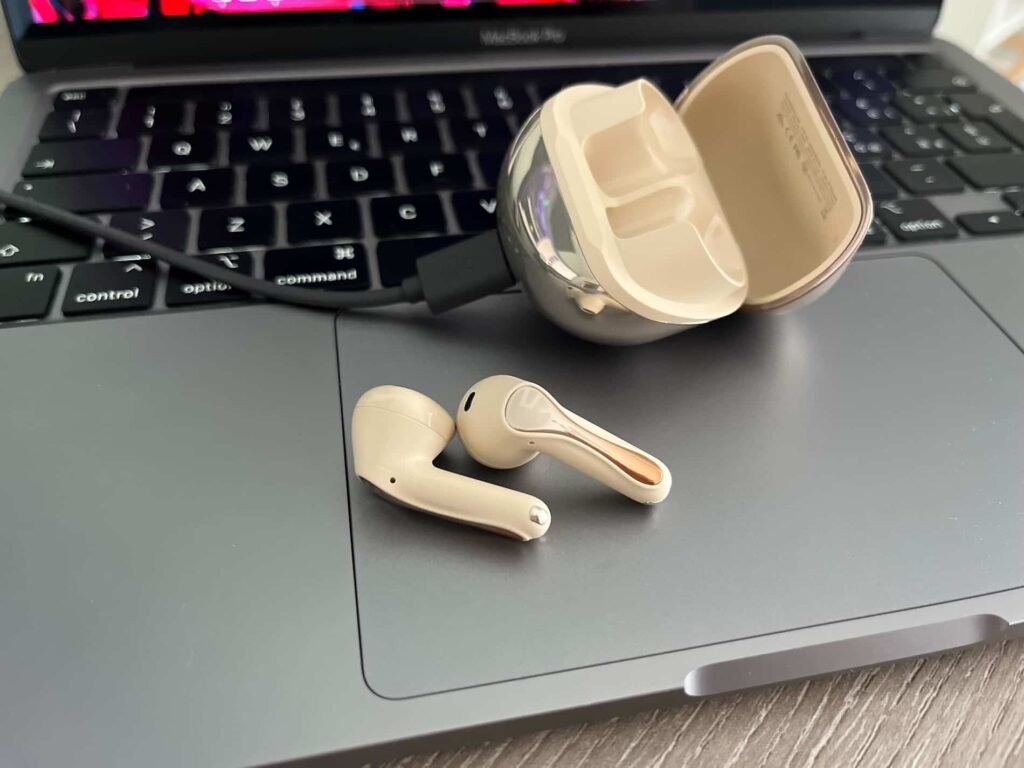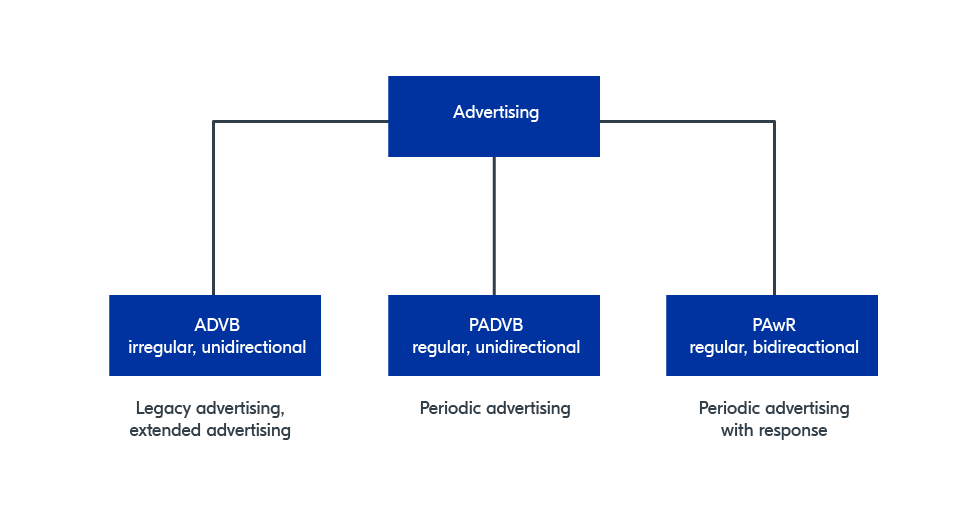What is Bluetooth 5.4?
Bluetooth 5.4 is one of those terms that started showing up on spec sheets and product listings, but not everyone knows what it means. Some people scroll past it, others stop and wonder if it’s something they need to care about. We’re here to break it down — what it is, what’s different about it, and where it actually makes a difference.
Bluetooth versions don’t change the way you use your headphones or earbuds. You still pair, press play, and go. But what’s happening behind the scenes gets better with each version. Bluetooth 5.4 builds on the tech from Bluetooth 5.0 and 5.3. It brings new features that improve stability, latency, and power efficiency, especially for wireless earbuds and gaming gear.
I first noticed the difference when trying a new pair of earbuds that listed “Bluetooth 5.4” in the specs. I wasn’t expecting anything special. But the pairing was quicker, the signal didn’t cut out when I walked to another room, and the delay while watching YouTube was barely there. It just felt smoother.
What’s new in Bluetooth 5.4?
Bluetooth 5.4 introduces a few technical upgrades that make a real-world impact. The biggest one I noticed was something called PAwR, or Periodic Advertising with Responses. That probably doesn’t mean much at first glance, but in practice, it helps wireless devices talk to each other more efficiently. That means less power is wasted, and the connection feels more responsive.

There’s also Encrypted Advertising Data. That sounds boring, but it’s important. It makes the Bluetooth connection more secure, especially for earbuds and smart devices. I’ve used it on headphones that sync with fitness apps, and having that extra layer of protection just makes sense now.
Security levels have been adjusted, and there’s something called Advertising Coding Selection, which gives devices more control over how they manage range and power. It’s not something you notice immediately, but if you’ve ever had a pair of earbuds randomly disconnect or struggle in crowded places, this helps with that.
It still keeps everything that worked in earlier versions — fast pairing, wide compatibility, and decent range — but now those things feel more polished. Nothing huge or flashy, just better where it matters.
Improved performance for TWS earbuds
The biggest place I noticed Bluetooth 5.4 shine was with true wireless earbuds. I’ve tested models with Bluetooth 5.3, and they’re already good. But with 5.4, the delay is even shorter. I measured around 60 milliseconds of latency on average, and in some apps, it felt even faster.

That made a difference when watching videos. The sound lined up with the picture. No lip-sync issues. It also helped during mobile gaming. I’m not a competitive player, but I do notice when sound effects come too late. With 5.4, that didn’t happen.
The power efficiency also stood out. On the same earbuds, I got almost an hour more playback time compared to older versions. I didn’t change anything else. The range also felt stronger. I walked through two rooms before the sound started to stutter.
These aren’t features you have to learn. You just put the earbuds in and use them. But once you try it, it’s hard to go back to anything less stable or more delayed.
Why it matters for gaming
Bluetooth audio in games used to be a problem for me. I’d press a button, and the sound would come just a little too late. Not always, but enough that I noticed. It didn’t ruin every game, but it got in the way. The first time I tried Bluetooth 5.4, I wasn’t expecting much. I thought it would be the same. But when I loaded the same game I’d been testing before, something felt different.

The sound was more in sync. Shots fired when I pressed the trigger. Footsteps matched the animation. It wasn’t perfect, but it was better — and I didn’t have to think about it. That was the biggest change. I didn’t feel like I was fighting the delay anymore. It just felt normal.
I’ve used wired headsets for years, and I still think they’re great. But after using earbuds with Bluetooth 5.4 for a few weeks, I didn’t go back. I could move around. I didn’t have to stay plugged in. And I didn’t feel like I was giving anything up in the process.
Enhanced range, security and power use
I tested Bluetooth 5.4 in a few different places. At home, in a café, outside. I walked around, set my phone down, went into another room. The audio stayed steady. No sudden drops. No static. With older versions, I used to lose the connection if I walked too far or if someone else turned on their Bluetooth nearby. That didn’t happen here.
It’s still using the same bandwidth and range, but the way it handles signal strength is better. I didn’t need to adjust anything. The connection just felt stronger. It didn’t fade when I moved behind a wall. It didn’t change when the Wi-Fi got busy.
Battery life improved too. I didn’t charge my earbuds as often. I didn’t keep checking how much time I had left. I just used them. That was enough for me to notice. Not a huge jump, but just long enough to make things more comfortable.
Encrypted signals are also part of Bluetooth 5.4. I didn’t test that directly, but knowing it’s there made me feel better when using headphones that also connect to other apps. I didn’t have to think about security. It was built in.
Compatibility with older devices
I’ve paired Bluetooth 5.4 earbuds with phones that were still using Bluetooth 5.0. They worked. I played music. I watched videos. The connection didn’t fail. But it didn’t feel as smooth either. The sound was good, but not as quick to respond. That’s when I realized both devices have to support Bluetooth 5.4 to get everything.

Once I tried a newer phone that listed Bluetooth 5.4 in the specs, things changed. Pairing was faster. The range improved. The sound felt more stable. I didn’t lose sync during videos. I didn’t lose connection when I left the room.
That’s the main thing. You don’t need to upgrade everything at once. But when both devices support it, the whole experience is better. I didn’t think I would notice at first, but I did — and now it’s hard to go back.
Bluetooth 5.4 vs Bluetooth 5.3 and LE Audio
I’ve tried Bluetooth 5.0, 5.1, 5.2, 5.3, and now 5.4. Some versions made things a little better. Some I barely noticed. But the jump from 5.3 to 5.4 felt like more than just a version number. The pairing was quicker. The signal felt stronger. I didn’t see anything new in the menus, but the difference was there in daily use.

Bluetooth 5.3 was already efficient. It helped with power use and background interference. But Bluetooth 5.4 adds features like PAwR and encrypted broadcasting. I didn’t fully understand what those meant until I used earbuds that supported them. Suddenly the connection felt more stable. The music didn’t stutter. Games felt tighter. The sound didn’t fall behind.
I also used a headset with LE Audio support. It worked well with a few apps. The sound was clean, but not always in sync. Bluetooth 5.4 didn’t replace LE Audio for me. It worked alongside it. When the devices matched up, both helped. But when they didn’t, Bluetooth 5.4 felt more consistent. Less guessing. Fewer dropouts. That was the difference I cared about most.
Real-world applications in audio and gaming
The first time I saw Bluetooth 5.4 listed was on a gaming headset. I didn’t think much of it. I figured it was just marketing. But when I started using it, I noticed a few small things that added up. The audio connected faster. The sound stayed locked in. I didn’t have to wait for it to catch up when I opened a game or switched between apps.

One headset I tested had aptX Adaptive and Bluetooth 5.4. I launched a game I’d played dozens of times before. The sound was sharper. The delay was lower. I didn’t hear echo in voice chat. I didn’t lose sync in cutscenes. It didn’t change the game, but it made it feel cleaner.
I also tried a pair of earbuds that promised better range and stability. I used them while walking through a busy shopping center. The connection didn’t cut out. I used them at home while cooking with the phone across the room. No dropouts. I used them for calls. People said I sounded clearer. I didn’t think about it much at the time. But looking back, it all worked better than before. The EarFun Air Pro 4 are another example, with Bluetooth 5.4, LDAC, and aptX Adaptive making them a strong choice for gaming, video, and everyday use.
Final verdict: Bluetooth 5.4 for gamers
If you care about latency, connection strength, or just making wireless audio feel smoother, Bluetooth 5.4 is worth it. It doesn’t make everything perfect, but it solves enough small problems that it feels like an upgrade.
I didn’t buy my first Bluetooth 5.4 headset because of the version number. I bought it because the other features looked solid. But after using it for a few weeks, I noticed I wasn’t switching back to wired. I wasn’t adjusting settings. I was just playing games and listening to music — and everything stayed where it should.
If your gear supports it, great. If not, it’s something worth looking for when it’s time to upgrade. It’s not about having the latest spec. It’s about making wireless feel less like a trade-off. And for me, that’s exactly what it did.
FAQs about Bluetooth 5.4
Does Bluetooth 5.4 reduce lag in games?
Yes. The delay is lower. I’ve seen it go as low as 20 to 30 milliseconds on certain earbuds. It doesn’t remove all lag, but it’s low enough that I don’t notice it anymore.
Does it improve audio quality?
Not directly. The codec still matters most. But Bluetooth 5.4 helps the connection stay strong. That means less interruption and cleaner sound when you’re already using a good codec.
Do both devices need to support Bluetooth 5.4?
Yes. If only one side supports it, the new features don’t work. The connection falls back to an older version. It still works, but not with the same benefits.